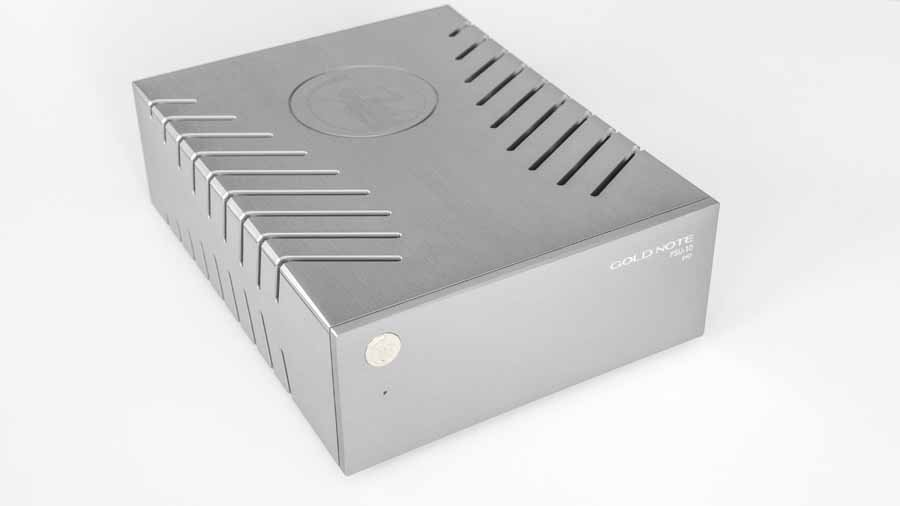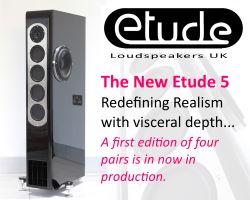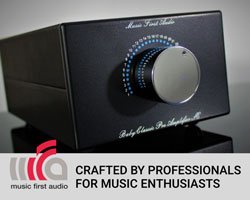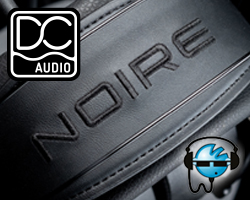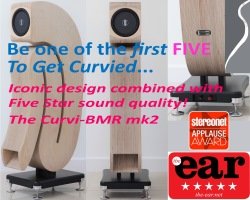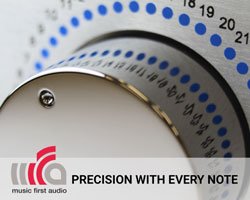AURALIC VEGA S1 STREAMING DAC & EXTERNAL PSU REVIEW
AURALiC and their VEGA S1 streaming DAC with additional external PSU is a bit of a departure for the brand in terms of form factor, but does the new look still have within it the great sonic abilities of the company’s previous offerings? Stuart Smith finds out.
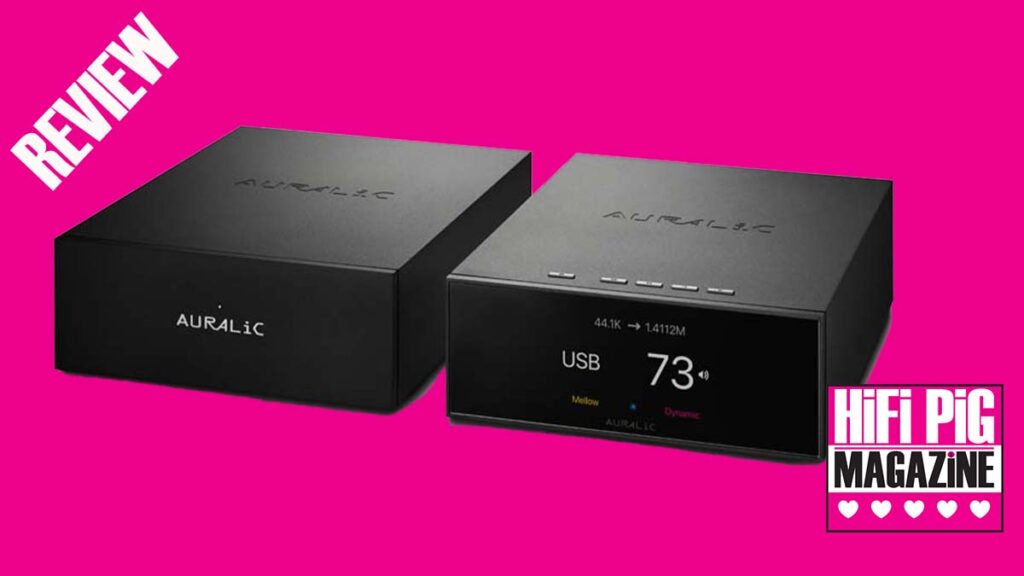
Back in April of this year we got news that AURALiC was going to be introducing a new streamer to their lineup and would be showing it off at the Munich High End event. Auralic has always been presented in lovely boxes, but the new S1 and its optional PSU were a bit of an aesthetic departure and arrived in shoe box-sized formats. I think this new format is a smart move from AURALiC and one that will appeal to potential users who are looking to have a more stylish way of playing back their music or who are not as space-rich as others. From my perspective, the new format would look great on a piece of domestic furniture and this opens up a whole new market of folk who just don’t want a dedicated rack – really, all you need for a very compact system is the VEGA S1 Streaming DAC (with or without the optional PSU) and a pair of powered speakers. I’ve mentioned it before but I do think AURALiC should make an amplifier housed in the same sized boxes as their new products – but I digress.
ABOUT AURALiC
“Originating in Beijing China, AURALiC has steadily grown and now has an additional office in Portland Oregon as well as specialised staff across North America and Europe”. AURALiC was created way back in 2009 after the founders were inspired by a Berliner Philharmoniker concert they attended and set about sowing the seeds to develop products that focused on providing music lovers with high-resolution streaming products. Various products followed and we at HiFi PiG Towers have been using one of their streamers for years now – we love the no-nonsense but technology-led approach that just delivers.
One of the key features of AURALiC’s products is one that I confess to not having used extensively and that is their Lightning streaming platform that includes Lightning Server, Lightning Link Connection, and Lightning DS Control. Essentially, Lightning offers users a system that works to monitor and serve your stored music plus all your subscriptions to streaming services that are controlled via their control app.
Another big differentiator with the AURLALiC S1 is that that files are recorded onto the memory DDR (Direct Digital Record) of the unit and accessed via DMA (Direct Memory Access) and then passed through the DAC stage in the S1. This is clever jiggery-pokery that (without getting all technical about it – though that’s on the AURALiC website should you want to read it) is intended to improve the sound quality of the S1 when using Lightning DS and the Lightning Server that is built into the S1.
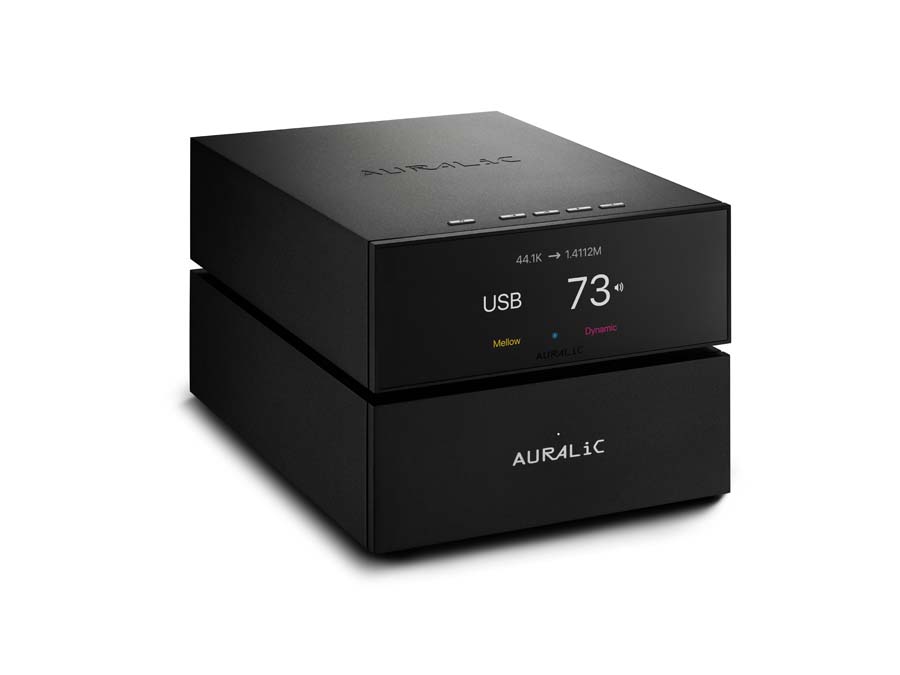
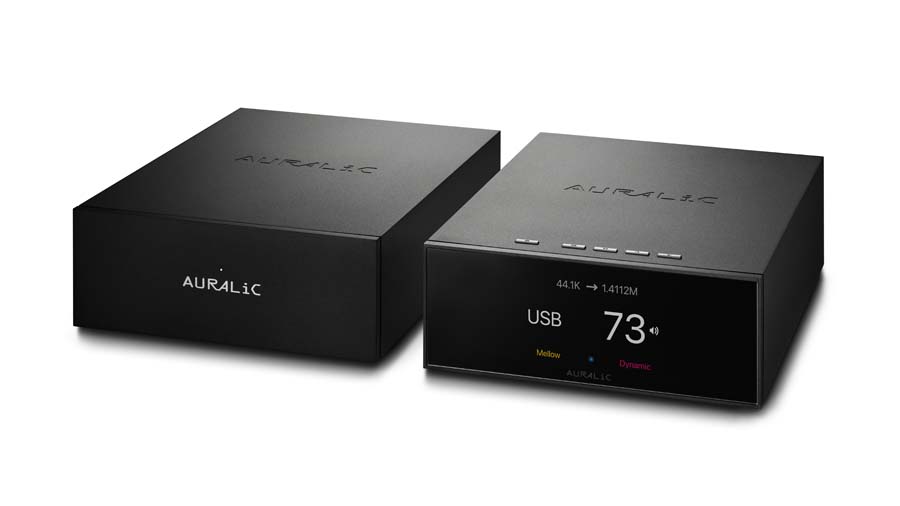
THE AURALiC VEGA S1 STREAMER
The pretty, if stark, new box looks lovely and the front panel of the S1 has a clear mirrored glass panel on the front that lights up with the very clear screen. The only other feature on the otherwise black box is a set of five gun metal buttons on top of the unit – it’s the epitome of sleek and understated and I like it as it kind of says “I’m confident enough to know what’s going on inside the box to not have to beguile you with baubles and glitter on the outside.”
Around the back of the box is a bit busier with XLR and RCA analogue outputs to connect to your amp/pre and then a series of digital inputs that include a couple of of TOS Links, Coax and USB. There’s a LAN input for wired connection to your network and another USB input for your Hard Disc Drive. Finally you have the IEC mains input and a HDMI cable input that is for connecting to the external PSU.
It’s on the inside of this Streaming DAC (you can buy the S1 Aries that comes without AURALiC’s Fusion DAC) where AURALiC have concentrated their efforts, so let’s have a look at what is going on in there.
First up is the Fusion DAC that incorporates elements of ladder and Delta-Sigma DAC designs. Then we have an Analogue Volume Control and Analogue Preamplifier that takes its cues from the pricier VEGA G2.2 and means that you can hook this up to a power amp or pair of powered speakers and control the whole kit and caboodle from your tablet for an uber-streamlined system. Also included and new to the S1 is a couple of modes that are in place to allow users to optimise the listening experience. Pure DAC mode is going to appeal to the purists out there and allows the unit to disable all streaming and network related functions and put all the system’s resources into nothing but signal processing and conversion processes. Whilst in Pure DAC mode AURALiC’s Direct Data Recording tech’ is used to store music from any of the digital inputs from the last hour to the Tesla G3’s memory so that users can replay any of that stored music. This is a clever bit of tech’ in my opinion and in my non-tech head I likened it to the the memory you would have on one of the old portable CD players where the player essentially reads ahead and stores the music in memory…though the AURALiC version is obviously a bit more involved than that. The other mode is Tone Mode and this is said to “refine” the sound character of the music using an alogirithm that has its origins of “auditory psychology”. I’m wiring this part of the review before I’ve actually had a listen to the VEGA S1 but my gut feeling is that I will most likely prefer the PureDAC mode over the manipulated mode, but I remain open-minded.
In addition to the above, the VEGA S1 has Dual 60fs Femto Clocks and features Galvanic Isolation to lower noise and to reduce clock jitter and signal distortion.
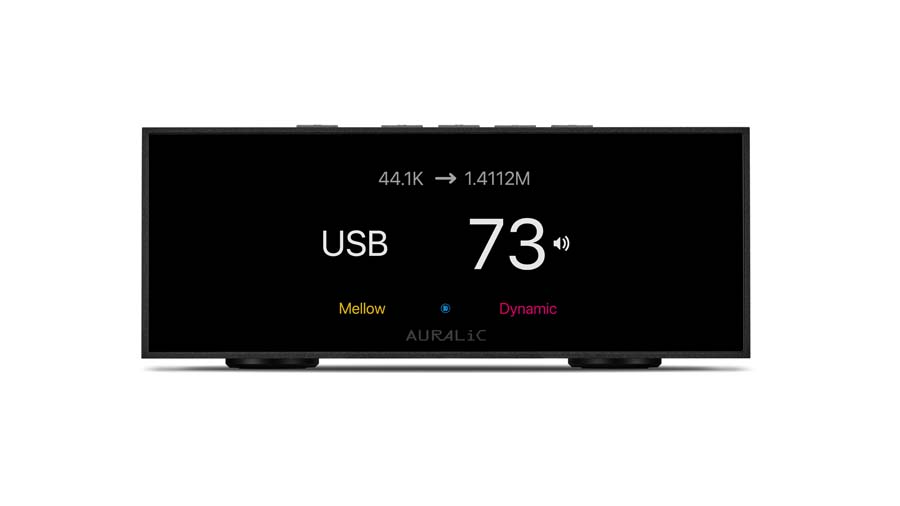
The VEGA S1 using Lightning DS will allow you to use “Apple AirPlay 2, TIDAL Connect, Spotify Connect, Internet Radio, and a variety of digital input channels including USB audio, Coaxial, and Toslink. AURALiC’s Lightning DS seamlessly integrates popular streaming services like Amazon Music Unlimited, TIDAL, Qobuz, TuneIn, KKbox and more. Additionally, S1 can play music stored on NAS drive, USB drive and CD drive.” The S1 will be Roon Ready upon completion of Roon certification which is a somewhat crucial for me as a dedicated ROON user, though I am going to expire the Lightning OS for the purposes of this review!
One thing I thought interesting was that the VEGA S1 does not have a wireless option and connects to your network only via ethernet. From a sound quality perspective this is a sensible option but from an appealing to a wider audience perspective I would have liked to have seen wireless connection included, though this would add to the price…of course.
So, the VEGA S1 is a good looking bit of kit that has plenty of interesting tech inside plus a couple of modes that have certainly piqued my interest to find out more and get it hooked up in the main system.
As I mentioned, this review unit came along with the S1 External Purer-Power Supply Unit which doubles the power capacity using two dedicated transformers and “Purer-Power” low noise supply circuits. Essentially, the external PSU allows for total galvanic isolation between the Tesla g3 processing using and audio circuits and is designed to eliminate interference and minimise noise. The two units connect via a HDMI cable, which I thought quite unusual. The units also came with a warning that I should not “hot swap” the PSU in and out of the system – forewarned is forearmed and all that!
Now, I mentioned earlier when introducing the new products that I’d not really used the Lightning OS operating system and so throughout this review I thought it about time that I explore the proprietary OS which to celebrate ten years of its creation is now in version 10.0 – this is where you can initiate the PureDAC and Tone Modes I mentioned.
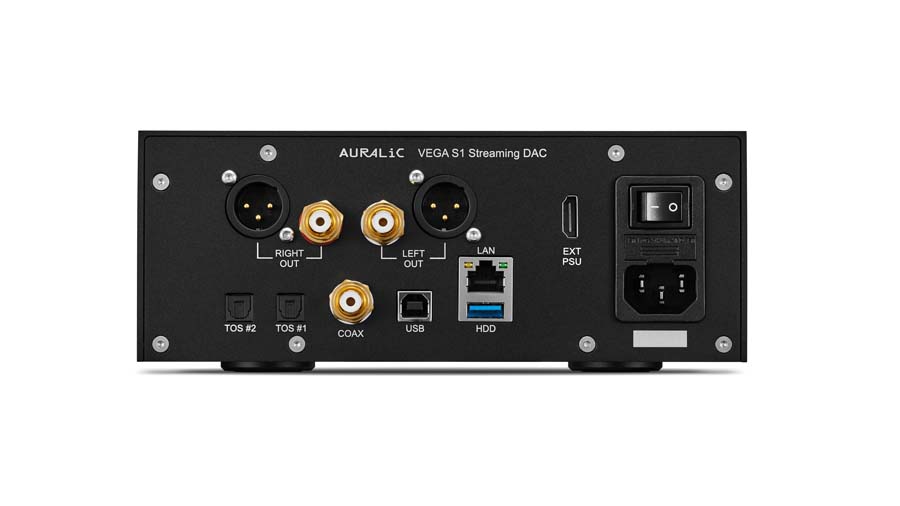
LIGHTNING SET UP
I’m including a bit about set up of this system because I think there is an inherent fear with some people (previously I included myself in this group) with regards to the witchcraft that is the home network.
The Lightning DS app (iOS only) is the proprietary control app for the VEGA S1 and other AURALiC devices. It will let you browse your library (once you add it) and then play music back through your device. In addition to playing locally stored files, Lightning DS will also let you add streaming accounts from Amazon Music, HRA, KKBOX, NetEase. Qobuz, TIDAL and TuneIn. Out of these I only use Qobuz and a quick press of the “Add streaming Account” button, adding my password and account details had me fully connected.
First of all I set up the library with was a simple case of opening the app, press ing the “Add Music Library” button, choosing which of the NAS drives we have to use, and letting the app do its thing. The library was added in a matter of moments.
You should be aware that Lightning DS will make an index of your library on your (in my case) iPad, but the size of this is relatively small and AURALiC say that a library of 100,000 albums/1,000,000 tracks will take up 1.8GB, though this does not include album artwork that could potentially take up much more space on your iPad.
Setting up the new device can also be done directly in Lightning DS and I like this – I hate fiddling about with small screens and the whole menu diving kerfuffle. The procedure is as simple as opening the Lightning app on the iPad, hitting the “Add New Device” button and following the on-screen instructions. Al the took a matter of about three minutes and as Mrs HiFi PiG commented, caused the least amount of shouting during setting up a network device.. ever.
SOUND OF THE AURALIiC VEGA S1
Once set up I thought it fair to test the VEGA S1 without the external PSU as I imagine this is how most folk will buy this unit. Tests with and without the PSU were carried out int he same system comprising Ansuz PowerSwitch D3 to the VEGA S1, into our Vinius preamplifier feeding our Electrocompaniet AW 800 M Power Amplifier which in turn feeds our Audiovector R6 loudspeakers. Ethernet cables were Ansuz, speaker cables and XLR interconnects were Tellurium Q, and power cables were Atlas. All electronics went through our Torus power unit and files were held on a NAS drive. I first heard the Vega S1 with a pair of ATC SCM50 SE active loudspeakers at the North West Audio Show – another situation where the S1 was paired with kit that (from a cost perspective) should really have massively outclassed it…they didn’t!
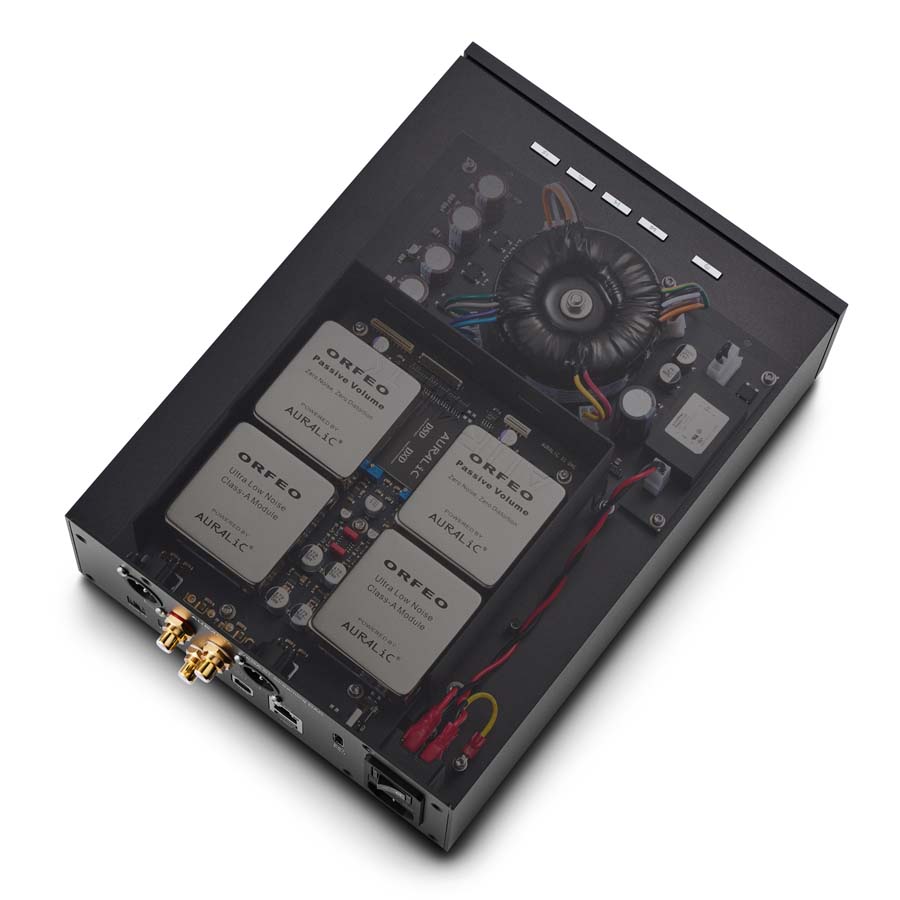
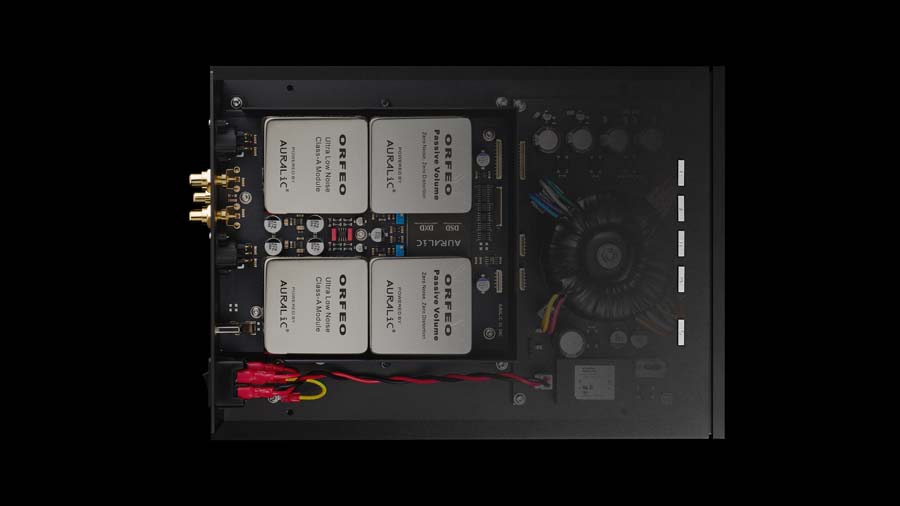
Playing the first track that popped up (Chario “Dance a Little Bit Closer – yeh, I know it’s a bit random) the immediate thing that struck was me the excellent positioning of things in the mix – the kick being panned slightly left of the clap. Despite ending at an age when I should know much better, I continued to listen to the rest of the track and it occurred to me that for the vast majority of music lovers, this would be as far as they would ever need to go with regards high-quality playback. Genuinely, there’s really very little to dislike here and at this price. The unit is clean sounding, detailed, and sound-staging is very good with good width and depth that allowed for easy “visualisation” of where instruments and sounds were placed in the mix.
Playing United Future Organisation’s “I Bet You Thought I’d Never Find You” I thought the sound was punchy on the bass kick but not so in-your-face that the mellow, laidback feeling of this track was lost in any way – it wasn’t Sunday, but this track on this system certainly evoked a lazy sunny Sunday morning vibe to the day and I ended up listening to the whole album.
Opening up Neil Young’s Tonight’s the Night album I was struck by how deadly quiet the VEGA S1 is when no music is playing. The opening twiddling on piano and guitar to the title track followed by the hushed lead and backing vocals came across very well before the track begins properly. Bass was easy to follow and articulate with Young’s vocal coming across with all the emotion that he obviously feels given the subject matter of this song. The guitar and piano at around a minute and a half play together nicely and it was easy to hear the overdriven guitar tone. Again, I got the feeling that the S1 was presenting the track very well and without being forced or pushing anything in the mix. Words I have jotted down I my notes are “natural”, “unforced”, and “detailed”.
Switching to QOBUZ has the Lightning App find everything I’m looking for immediately and seamlessly. I pop on Nirvana’s Come as You Are and all goes swimmingly well with no complaints from me. Being hyper-critical, perhaps the S1 is a bit polite, but there is nothing missing in the mix and I’d be happy to listen to this kind of track on the unit all day long. Detail retrieval and presentation is a fine line between having everything present without overloading the listener with an overly harsh sound, particularly in the upper-mid and tops. The S1 is an easy to get on with and pleasing listen and I can see it being hugely popular with music lovers. I ended up listening to a good number of test tracks followed by the rest of the album – surely a very positive sign that a product is doing something right.
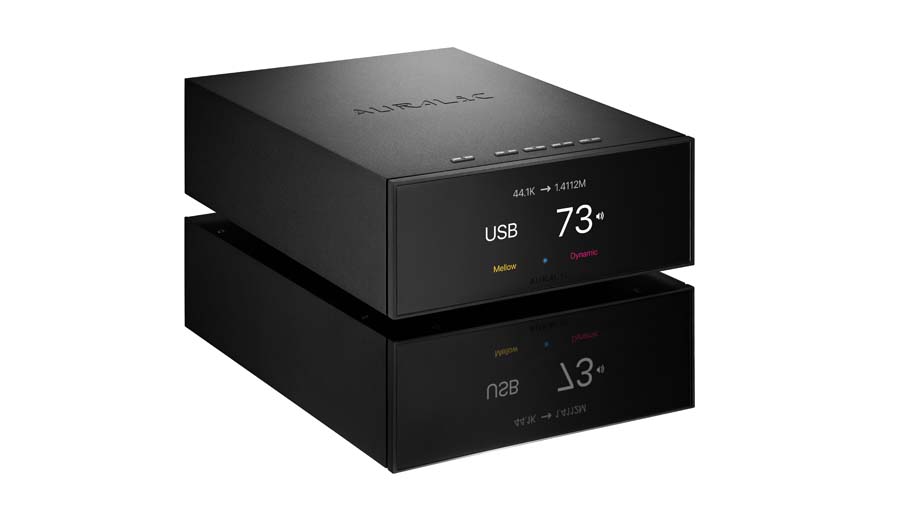
My overall take of the S1 without the external PSU was that it is an accomplished streamer and DAC that balances its presentation beautifully between detail retrieval and a smooth and relaxed sound presentation. The noise floor is astonishingly low! The screen on the front of the unit displays the album artwork clearly enough, though I’d not want to rely on it from across the room. The buttons on the top of the S1 for scrolling through menus and the usual playback functions are fine, though I don’t think most people will use them – having then on top does make for a very clean looking front facia that I really like,
I did find that sometimes when switching between my library and Qobuz on the DS Lightning app that there was an audible click.
WITH EXTERNAL PSU
Richard at AUARALiC UK warned me beforehand that I should be careful not to “hot-swap” the PSU in and out and that was duly noted. The connection between the two is via a supplied HDMI cable with I thought was an odd choice, but it works flawlessly.
Connection is easy as you like – turn off both the PSU and S1, unplug the S1, plug in the PSU and attach the HDMI cable into the obvious slots on the PSU and S1. Turning the PSU the S1 fires up and begins its start-up routine. I like easy things that are nice and easy and everything about the S1, the DS Lightning app and the PSU have been as easy as pie. This ease of sorting a product is an important one in my opinion! When streaming and computer audio first began to rear its head I railed against it, not least because (to me) it often felt like you needed a PhD in advanced networking protocols to get most things working. Thankfully time moves on and company’s like AURALiC have streamlined the process to be simple…even for the likes of me.
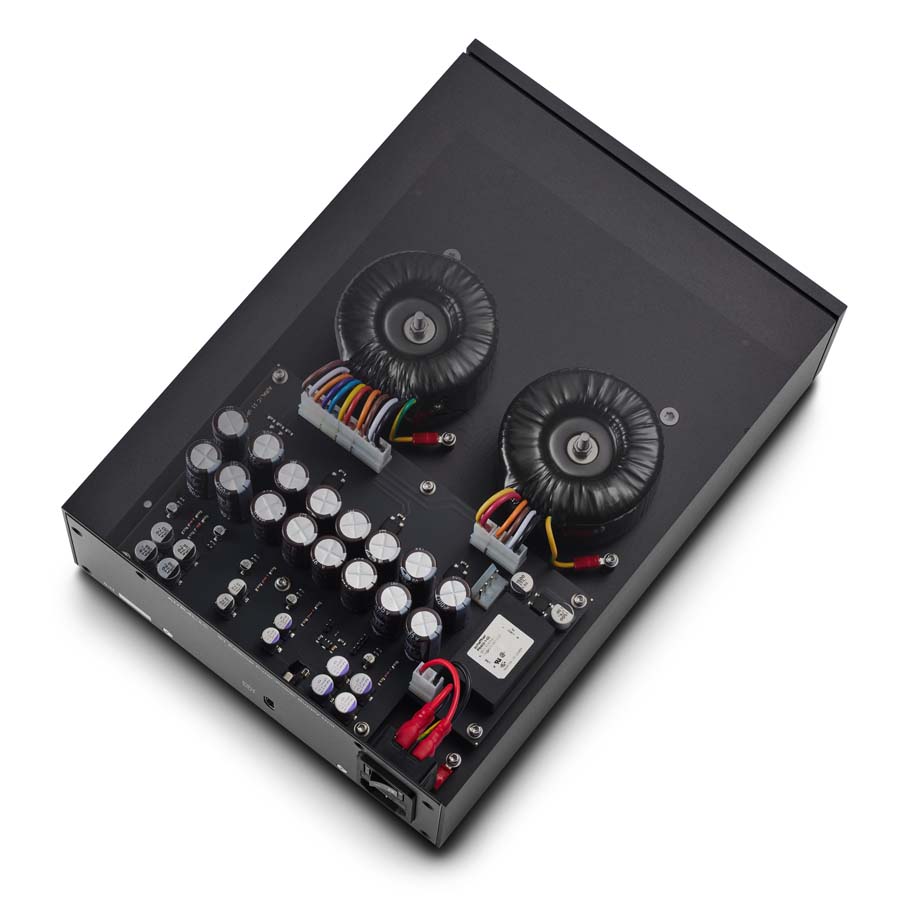
With the PSU connected and the S1 working there is still no sound coming through the speakers when no music is playing. However, when I pressed play on Gessafelstein “Aleph” it was clear that something had audibly improved over the standard unit – and it was an immediate realisation that something had changed for the better. That deathly silence was (audiophile cliche alert) somehow denser and sounds more defined in their space. It’s an odd one to describe verbally (or in writing) but it is somehow cleaner and sonically more defined and more detailed with spatial cues such as reverb being somewhat more apparent. Playing the same opening lines to “Tonight’s the Night” was a similar experience to the standalone, but now the percussion that is barely there anyway was somehow more audible. Throughout the track there seems to be a little more drive to the tunes. It’s not a huge improvement and most people that just want a great way to listen to their tunes will no doubt not bother with it. However, those bitten by the desire to eek more out of their system bug will certainly want to invest the extra grand it costs.
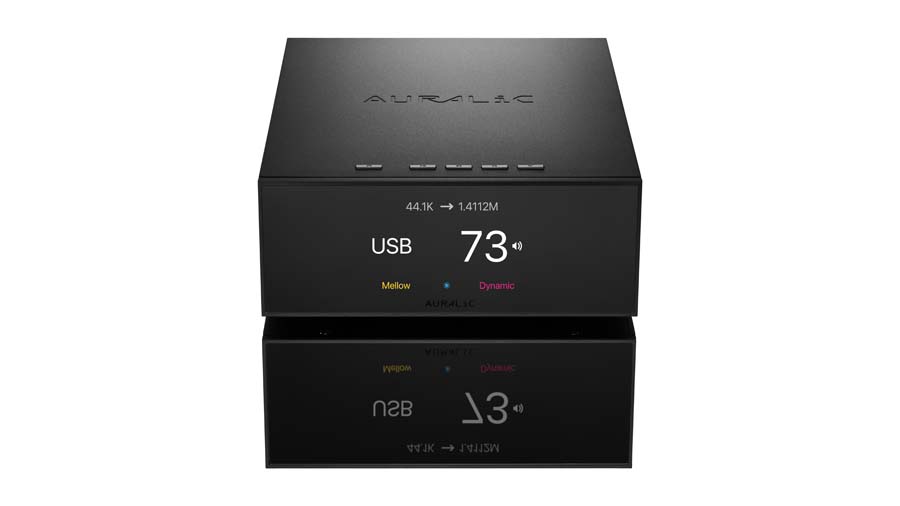
QUIBBLES
Lighting DS is only compatible with iOS devices and whilst I am now fully bought into the platform (after many years of railing against it) not everyone uses Apple devices and I would like to see an Android app become available.
VEGA S1 has only a wired connection to your network. I’m aware that wireless connections can potentially reduce sound quality, but I think some folk will miss having that convenience. Speaking to AURALiC, the main idea is to keep costs low and to concentrate on the sound of the unit, something I think they have achieved.
Occasional audible click when switching between “sources” on the Lightning app.
Comparatively high price of the PSU.
CONCLUSION
The standalone VEGA S1 from AURALiC is a small footprint, great looking little box of tricks that is easy to set up and a doddle to use with the DS Lightning app, though it will run through ROON should you so desire. Sonically, the S1 sounds ace and even in a very revealing system that we have set up at HiFi PiG Towers, it was a really enjoyable listen characterised by a detailed yet smooth delivery that is easy to get on with and easy to get lost in your tunes with.
Using the Lighting DS app, the S1 is a doddle to set up and get working, something I think important if high-quality streamers like this are to appeal to a wider audience than dedicated audiophiles.
Overall, I really enjoyed my time with the S1 from AURALiC and I think it offers a level of performance that offers good value for the £2K asking price (plus £1K for the PSU). It’s not got all the bells and whistles like WiFi of more expensive units in the AURALiC range, but if you can live without that, it seems to be a great value proposition.
Adding the PSU into the equation does improve things and I would certainly have it myself, however, the laws of diminishing returns do kick in here and at the best part of a grand its going to be an additional item for those willing to spend to get the last ounce of performance out of the S1.
Why am I giving the award I have? On its own I consider the AURALiC S1 to be an outstanding product that offers a fabulous sonic performance for two grand and on its own it is an Editors Choice award winner, for sure. However, I was sent the S1 and its PSU to review as a whole and that adds a further grand to the price and I think this is quite a lot to pay for the improvement – though there is no doubt that it does offer sonic improvements!
AT A GLANCE
Build Quality and Features:
Nice looking and well-finished unit
Clear display and buttons, but most will use the DS Lightning app to set top and control
Lightning DS is intuitive and good to use and it integrates your streaming accounts flawlessly
Sound Quality:
Detailed and yet unforced sonic signature that is easy to get on with for long periods of time
Great sound-staging with regards to stability and it sounds natural
Adding the PSU improves performance somewhat
Value For Money:
As a standalone streaming DAC, the AURALiC S1 offers good value for money given how it sounds. Adding the external PSU is a worthy addition that improves sound somewhat, but that improvement comes at a cost that adds another 50% to the price. Even at £3K, I think the S1 plus S1
We Loved:
Ease of set up
New stylish look
DS Lightning app
Effortlessly easy to get on with sonic presentation that is detailed but never etched to the point of harshness
Roon ready
We Didn’t Love So Much:
Lack of WiFi
PSU adds considerably to the price
DS Lightning is still only iOS
Elevator Pitch Review: At just shy of a couple of grand, the S1 from AURALiC offers an easy to set up streaming DAC that is a joy to sit and spend time listening to your tunes with. It offers a sonic performance that is balanced, detailed yet effortless, and a joy to listen to. Adding the PSU ups the cost significantly but does improve the sound – prospective buyers will need to judge for themselves whether it is worth the extra dosh. I love the new styling of the S1 with its have width casing and I think this will appeal to a wider audience who want to get an improvement over the likes of Sonus etc.
Price:
VEGA S1 – $1999, €1968, £1999
Stuart Smith















































